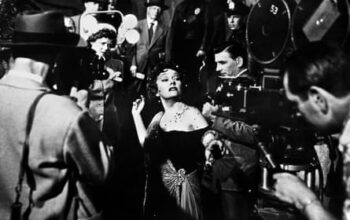
A common complaint I’ve heard about Dune: Part Two is that it is too similar to the first Dune, Denis Villeneuve’s audacious gamble to adapt just half of Frank Herbert’s beloved sci-fi tome and hope for another greenlight from Warner Bros. This is correct. Part Two, like its predecessor, is arcane, surprisingly weird, oddly structured and deeply uninterested in pandering. This is actually a compliment, because though I have seen Part Two six times and still do not totally understand the Bene Gesserit, the film, like its predecessor, is a strange creature in modern cinema: a true blockbuster – a cinematic behemoth that makes millions, generates memes and cements the ever-vanishing movie star – that harnesses the full power of the art form.
That is no small feat – this is a movie with many moving parts and much potential for off-putting density. (An honest reader of the book will tell you: Herbert frequently gets in his own way. The rich source material itself is no guarantee of quality storytelling.) If Part One was a thrilling immersion into a rare universe that felt genuinely alien and remote from our times, Part Two is the spaceship hurtling at full speed – and that spaceship, gloriously designed and rendered in sleek silver, landing on a planet in one of Villeneuve’s signature shots of great, arresting contrasts in scale.
Part Two revels in such latitude of spectrum, the vertigo of vast swings – huge spice harvester next to palm-sized desert mouse, sonorous Hans Zimmer score to pin drop silence, intergalactic political intrigue in the extraction of water from one single human body. Giant sandworm, tiny prince, mountains of sand and flickers of spice. Timothée Chalamet as tremulous, humble young interloper to genocidal dictator bent on revenge, Zendaya from barely a presence to probable hero – plus a dose of (bald) Austin Butler as a memorably bizarre and magnetic villain and Florence Pugh, with her uncanny ability to appear natural in every setting, as an inscrutable princess in this game of thrones.
To wit, Part Two is, frame by frame, a beautiful film to behold, another feat of mesmeric alien vibes – a movie that I want to watch on repeat, at any level of sobriety, on any screen size, though preferably Imax, which was my single greatest sensory experience of 2024. It is not a perfect movie, at times it is too remote and lucid for its own good, its politics a little too shrouded by the sands (and with too few Arab actors for a people, the Fremen, clearly modelled on the Bedouin). But it is a spectacular one – a visual feast of bombastic and striking flair, a collision of forces too large for our world. All while maintaining a precise balance of angsty self-seriousness, self-awareness and pageantry that makes me laugh and clap my hands at the screen. Chalamet’s Paul wrangling a giant sandworm through walls of sand? Austin Butler’s Feyd-Rautha fighting to the death under Giedi Prime’s black sun? Fremen blowing up enemy helicopters? Chalamet yelling in a made-up language and then declaring “I am Paul Muad’Dib Atreides, Duke of Arrakis!” to 10,000 followers and one disappointed Zendaya? Delights! I live!
As I argued three years ago for Dune as best picture, watching either film provokes a guileless sense of wonder, an earnest appreciation for living at a time when such spectacle is possible – and convincing – on screen. Particularly in a year of unconvincing films (The Substance), or highly flawed (Emilia Pérez), devolving (love The Brutalist, but the second act …) and questionably lit ones (Wicked), Dune: Part Two is all the more refreshing. I’m doubling down on my argument for Part One, because Part Two is thankfully doubling down on its strengths: if the Oscars are, in theory if not usually in practice, an occasion to reward excellence in the collaborative art of film-making, to celebrate the fantastic illusions such collaborations can achieve, then it’s finally time for Dune.
Source: theguardian.com



